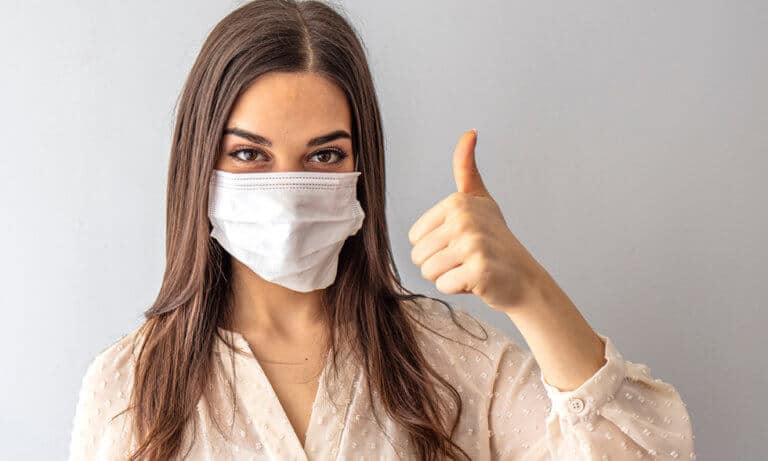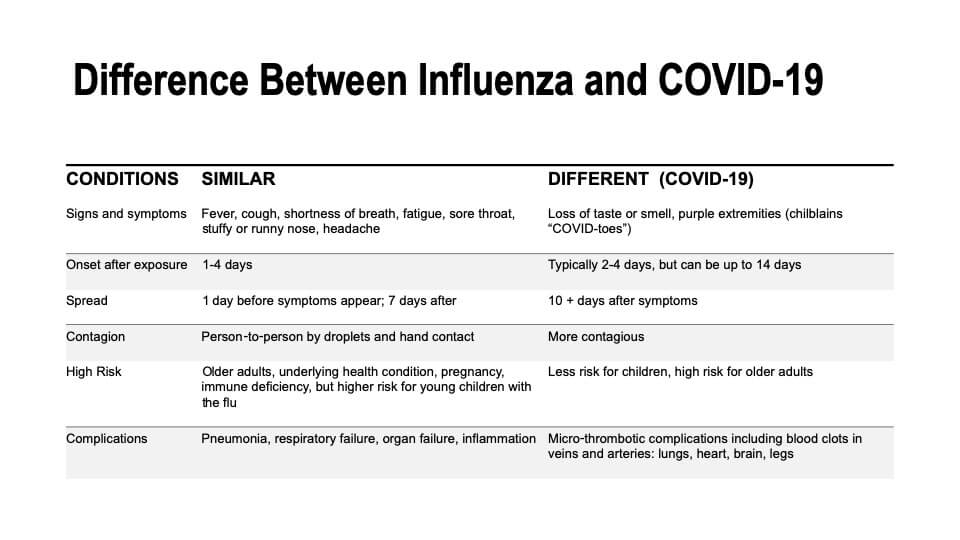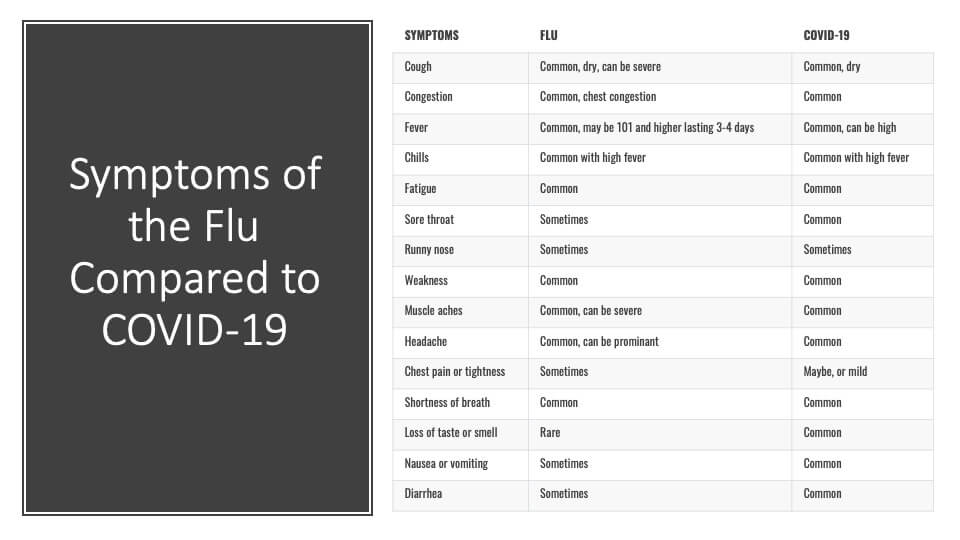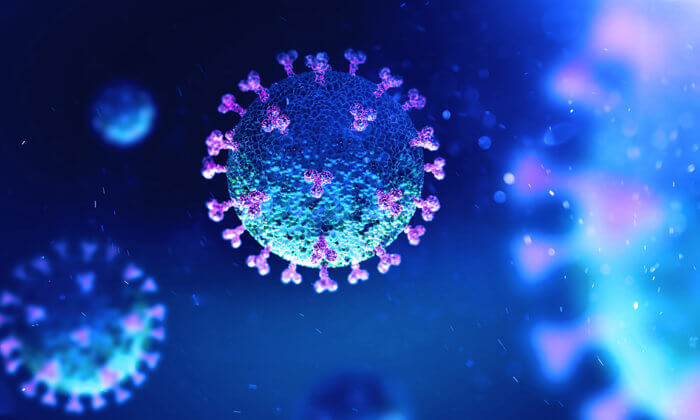How To Boost Your Viral Immunity With Natural Medicines During the 2020-2021 Winter Flu Season and Beat COVID-19 – Part I
In this series, I present practical ways to beat the flu and bend the COVID-19 curve in your favor.
| | Reading Time: 9 minutes

Every day since February 2020, I’ve received similar questions from patients and readers that go like this: Is COVID-19 as severe as the CDC says? Are there ways to prevent getting sick? Can I get the flu and COVID-19 at the same time? What should I do to stay out of the hospital? Will I die if I get infected?
The short answer is if you don’t get exposed, you won’t get sick. Wear a mask in public. Avoid crowds and practice social distancing. Wash your hands. And, wipe commonly touched surfaces like door knobs and counters.
They also want to know if nutritional supplements will help boost immunity. It’s true that common sense natural health recommendations for flu prevention like taking extra vitamin C and zinc, and at the first sign of the sniffles adding elderberry or echinacea, are useful. And vitamin D3 may modulate immune response to viral infections. But are these few supplements enough to bend the curve of this pandemic?
Has the conversation about boosting immunity against viral infections become oversimplified? Are expectations too high? My answers are:
- Yes, you can reduce your risk of infection and shorten your sick time if you get seasonal viruses like a cold or the flu by improving your immune status if your nutritional status is deficient in key nutrients.
- But new pandemic viruses don’t easily bend to simple natural treatments or even drugs already in use.
- Overly simplified approaches to pandemic viral infections are more often ineffective and sometimes harmful. For example, in the first SARS epidemic, many people in China were harmed by high dose steroids rather than by the disease itself. In COVID-19, more people died due to the use of respirators in hospitals than from the actual infection. In the early months of the pandemic, the immune-suppressing and antimalarial drug, hydroxychloroquine, was promoted by reputable doctors as a “cure” that turned out to be useless and caused severe heart rhythm problems.
The main question people ask is about vaccination. Many health-conscious people have never had a flu shot. I’m among that group. But, they want to know if getting the influenza vaccine this flu season will help them avoid getting COVID-19.
Solving the Vaccine Impasse
Since there is no antiviral drug that effectively treats COVID-19, public health experts tell us that getting SARS-CoV-2 under control hangs on a safe and effective vaccine. In a New York Times update on 24th October 2020, 48 different vaccines are already in clinical trials on humans with another 89 in preclinical testing on animals. That’s impressive, but why so many? And at least ten are at the final stages of testing for safety and efficacy. But some of those will fail before final approval. Others may get approved but won’t provide clear proof of effectiveness. True, we only need one that works. But we won’t have that one for months, likely much longer.
In the meantime, we’re heading into the winter flu season, and COVID-19 cases continue to rise. What should you do now to prevent catching the flu and to bend the COVID curve should you get sick?
The most pressing complicating factor now is the flu season, so let’s first look at influenza vaccination and then at the pandemic coronavirus. Conventional medicine promotes the influenza vaccine as the best and only way to reduce your risk of getting the flu and spreading it to others. But is that the solitary solution to warding off the flu?
For good reasons, many question the safety of an annual flu shot and challenge its value due to an effectiveness rate of 40-60%. For those over 65, even with a high dose vaccine, the effective rate is only 24%. Though that’s not great, it’s about average for most drugs. Doctors rarely deal in clinical absolutes and are okay with reducing the odds of getting infected and improving your chance of having a milder illness from vaccination. But people look at it differently than scientists and medical doctors. Each patient is a study of one. They want to know how it will help, or harm, them. Let’s review some of the concerns my patients often ask me.
Can You Get The Flu From The Vaccine?
A flu shot cannot give you influenza because there are no live viruses in the vaccine. However, about 25% of those who get vaccinated feel sick, as if they caught the flu, right after their shot.
5 Common Side Effects of the Flu Shot:
- Soreness, redness, and swelling at the injection site
- Headache
- Fever
- Nausea
- Achiness
Some have adverse effects, problematic enough to make an appointment with their primary care physician or go to the ER.
Worrisome Side Effects of the Flu Shot:
- Shortness of breath and wheezing
- Swelling around the eyes or mouth
- Hives
- Weakness
- Dizziness
These worrisome side effects are likely caused by an allergic reaction to the egg base used in manufacturing the vaccine. Don’t get the regular flu shot if you’re allergic to eggs. But if you still want to get a flu shot, ask your doctor or pharmacist to recommend an egg-free vaccine.
Can The Flu Shot Trigger An Autoimmune Reaction?
Many are concerned that flu vaccination triggers autoimmunity or can cause chronic fatigue syndrome (CFS). Though rare, research suggests that joint symptoms in rheumatoid arthritis patients could temporarily worsen. And less than 1% of those who get the flu shot may develop Guillain–Barré syndrome (GBS). This inflammatory disorder causes progressive muscle weakness and paralysis. So the chances of an autoimmune reaction could happen but are very low.
On the other hand, influenza infection, as well as other viruses like Zika, can cause GBS making people think that a flu shot can do the same. It’s an inaccurate comparison. An infection from a live virus “caught” from a sick person with the flu is one cause of GBS. And Zika virus from a mosquito bite is another cause. And rarely, an adverse reaction from a vaccination.
Does The Flu Shot Cause Chronic Fatigue?
Those with chronic fatigue syndrome (CFS) worry that getting a flu shot could worsen their symptoms. Researchers found that CFS patients may have less immunological benefits from the influenza vaccine and up to four times more side-effects that last longer than those without CFS. However, vaccinated CFS patients may receive some protection against the flu while not causing any long term worsening of their condition. This is a choice between you and your doctor, but if you are a CFS patient and avoid annual flu vaccination, follow safe practices to avoid infection.
Can The Pneumonia Vaccine Prevent Lung Complications?
For good reason, serious lung complications concern people with pre-existing lung disease, those with immune deficiency, and those over 65. Pneumonia is a serious, potentially life-threatening consequence of respiratory viral infections like influenza or COVID-19. In pneumonia, the lungs become inflamed and filled with fluid. Most recover independently, but some have a severe illness requiring hospitalization and can have permanent lung damage. Some will die. Dodging pneumonia is one of the main reasons why preventing influenza and COVID-19 is essential. Don’t underestimate the seriousness of pneumonia.
Pneumonia vaccines are not perfect either but have a reasonable effectiveness rate of between 45-75%, much better than the flu shot. If you’re over 65 and are concerned about preventing pneumonia, discuss which vaccine is best for you with your doctor. But don’t neglect to strengthen your natural viral immunity.
If you opt-out of vaccination, what are your options? Before I discuss how to improve your body’s natural defenses, let’s look closer at each infection.
Similarities and Differences Between a Cold, the Flu and COVID-19
Because influenza and COVID-19 are both contagious respiratory infections, though caused by different viruses, many of the symptoms are similar, making it difficult to tell them apart. At their worse, both can trigger a cytokine storm with high fever, and both can result in pneumonia, sometimes a fatal disease in susceptible adults.
The onset of symptoms after exposure is about the same: from a few days to two weeks. Some don’t feel sick or have symptoms with COVID-19, but they are still contagious. Let’s review some of the similarities and differences.

Covid-19 Symptoms
The most common symptoms of Covid-19 are fever, a new persistent dry cough (without or with little phlegm), and a sudden loss of sense of taste and smell. Some experience fatigue, body aches and pains, a sore throat, headaches, and shortness of breath. Diarrhea is possible but less common. A runny or stuffy nose (like when you have a cold) is uncommon. Symptoms can range from mild to severe.
A fever is a temperature of 38o C (100.4o F). If you don’t have an oral or infrared thermometer, use your judgment based on symptoms. The body, especially the face and forehead, will feel warm to the touch. Your body may feel hot. You could have chills or alternating chills and fever. And you could also have facial flushing and glassy eyes. A fever usually indicates an infection. Some people don’t have a fever but are sick and contagious.
Flu symptoms include malaise, fever, fatigue, a dry cough that may become phlegmy, body aches and pains, and headaches. Some have a runny or stuffy nose or a sore throat. Diarrhea and vomiting can occur, mainly in children. There is usually no sneezing with flu, like with a cold, but you could have shortness of breath.

Symptoms of a Cold
Cold symptoms start slow compared to the flu which comes on fast. You don’t usually have a fever with a cold. And you may not feel tired. The most common systems are a stuffy nose, clear runny phlegm, and a mild sore throat. Sometimes people have a cold but call it a mild flu.
Flu Clues From Down Under
Seasonal influenza migrates across the planet in patterns. Annual flu season starts in the Southern Hemisphere during our summer—their winter—and runs from April to October, peaking in August. The end of their flu season overlaps with the beginning of ours in the Northern Hemisphere, running from October through March, peaking in February.
In the Southern Hemisphere, COVID-19 infections were high in Brazil and other South American countries. But, surprisingly, few caught the flu. Experts were baffled but offer that wearing masks and avoiding gatherings limited the spread of both the flu and COVID-19.
Australians also had fewer flu cases than average. Health experts believe this was due to an unprecedented number of people getting flu shots for fear of a “double-whammy” illness: catching the flu and getting COVID-19 at the same time.
Another reason may be this year is milder than average flu season without a circulating pandemic strain of the bird flu or swine flu.
It’s difficult to predict how influenza viruses might evolve. Easy answers are likely inconsistent with the biological reality of either virus. However, public health experts are hopeful that the US and Europe will also experience a milder than average 2020-21 flu season. That’s good news!
3 Possible Flu + COVID-19 Scenarios
We don’t yet know enough about how the influenza virus might interact with the pandemic coronavirus. But infectious disease experts believe it’s possible to be infected by both viruses at the same time. Another possibility is that you get severe flu that weakens your immune system, making you more susceptible to another infection, like COVID-19.
- Worst Case Scenario: Colliding viruses happen when flu infection rates are more significant than expected, and there are pockets of increased COVID-19 infections
- Best Case Scenario: Milder than average flu season and COVID-19 infections continue to drop.
- Anything In Between: Milder than average flu season and pockets of COVID-19 infections increase
COVID-19 symptoms include shortness-of-breath, a fever, dry cough, and sometimes fatigue.
It doesn’t have a runny nose, postnasal drip, itching, watery eyes, or nasal congestion and sinus pressure, or sneezing. These are symptoms of the common cold or allergies. Allergies don’t have fever or body aches, and typically no coughing.
Closing Thoughts
The SARS-CoV-2 pandemic is not over. And, it doesn’t look like it’s going away soon. Expect it to overlap with flu season through the winter of 2020-2021.
We’re entering a new phase, not a second wave, with a temporary decline in some places and rising cases in others. Even countries that did well in the beginning, like South Korea, experience clusters of outbreaks. However, it looks like Europe is experiencing a second wave, though it’s too early to tell.
Remember, every cough and sniffle doesn’t mean you have COVID-19. You might have a cold or the flu, or allergies. If your symptoms are mild, stay home, get enough fluids, rest, and take your temperature. Call your doctor’s office if symptoms worsen.
Take good care of yourself and your family’s health. Be well and stay safe.
Dr. Williams Advice:
- Your best bet for this fall and winter is maintaining public health guidelines: wear a mask, avoid crowds and close contact with others, and wash your hands.
- Increase your resilience with a healthy diet, enough rest, moderate exercise, and keep hydrated.
- Take immune supportive supplements.
- If you have symptoms and suspect coronavirus infection, get a rapid COVID-19 test. If it’s positive, stay home. If you’re not sure if it’s a cold or the flu, get LabCorp’s dual test for COVID-19 and influenza A/B, with RSV.
- Call your doctor or go to Urgent Care if symptoms worsen.
In Part II, look for updates on immune supportive supplements and the current research on other natural products to beat the flu and prevent COVID-19.
More Information on Dr. Williams:
- For current patients and followers, order medical-grade supplements from Dr. Williams’ protocols on Wellevate or Fullscript.
- If you’re new to Dr. Williams’ content, sign up for Wellevate to order professional-grade supplements on your own and receive a complimentary discount on all orders.
- Check out his books Viral Immunity and Beating the Flu and articles about the coronavirus pandemic on Medium.
- Sign up for the next Q&A on natural health, where he teaches the key “how to” points from recent blogs on Instagram Live.


